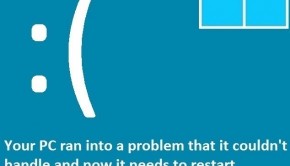Why Does the Nvcpl.dll Error Appear on My Screen & How to Sort This Out?
Reader Question:
“Hi Wally, why does the Mapi32.dll error pop up when I install a software application?” - Angelica S., United Kingdom
Before addressing any computer issue, I always recommend scanning and repairing any underlying problems affecting your PC health and performance:
- Step 1 : Download PC Repair & Optimizer Tool (WinThruster for Win 10, 8, 7, Vista, XP and 2000 – Microsoft Gold Certified).
- Step 2 : Click “Start Scan” to find Windows registry issues that could be causing PC problems.
- Step 3 : Click “Repair All” to fix all issues.
Setting up weekly (or daily) automatic scans will help prevent system problems and keep your PC running fast and trouble-free.
Wally’s Answer: Like the Mapi32.dll error, the Nvcpl.dll error appears out of nowhere. A number of users have complained that it pops up when installing certain software, when the computer logs into windows, when it shuts down, or even during a Windows installation.
The sole reason that the Nvcpl.dll error appears is that the Nvcpl.dll file is corrupted or even deleted. There may be a number of problems why the error appears, such as a virus, malware issue, or problem in your computer’s registry.
The internet is full of stuff, and a number of users encountering the Nvcpl.dll error head on over to a website. They download the file to place it where the original was and hope that this would solve the problem, but it never seems to. You are better off recovering your original file, rather than finding a replacement from a foreign source.
What Does the Nvcpl.dll error look like – Error Scenarios
Just like a lot of other errors, the Nvcpl.dll error has more than one way to appear on your screen. The team has done our best to post the likely error messages, such as
“Nvcpl.dll Not Found”
“The file Nvcpl.dll is missing.”
“Cannot start [APPLICATION]
“Cannot find [PATH]/Nvcpl.dll file”
Different error messages may have a unique cause, but all appear due to a conflict with the Nvcpl.dll file. In such a scenario, you must re-install the file, which has been causing the error.
How to fix Nvcpl.dll errors?
You might not be able to access your Operating System in normal mode due to the Nvcpl.dll error, so it is best if you start Windows in Safe Mode.
Restoring the file – One of the unlikely scenarios is one in which you mistakenly deleted the file. More often than not, the computer might have confused it for a virus and deleted it. In such cases, scroll through the Recycle Bin to find the file, or if it has been already removed from the Recycle Bin, you need a file recovery tool.
Run A Virus Scan – Obviously, you did not have to do anything with the Nvcpl.dll file corruption. There has to be a virus or spyware involved. Run a virus scan through an online tool, or one, which scans your computer before it boots up. If the spyware scan does not do any good, chances are that you will have to either stop using the defected application or if the error has to do with your system performance, restart the operating system.
System Restore Feature – Many users protect their computer from imminent malfunction by making a system backup. In case you have not made one, the only thing left is to restore the computer to a previous configuration by the use of the System Restore Feature.
Reinstall Application – The only way to restore the original Nvcpl.dll file could be through re-installing the program. This will restore the file, and the Nvcpl.dll error will be history.
I Hope You Liked This Blog Article! If You Need Additional Support on This Issue Then Please Don’t Hesitate To Contact Me On Facebook.
Is Your PC Healthy?
I always recommend to my readers to regularly use a trusted registry cleaner and optimizer such as WinThruster or CCleaner. Many problems that you encounter can be attributed to a corrupt and bloated registry.
Happy Computing! ![]()

Wally’s Answer Rating
Summary: Every Windows Wally blog post is evaluated on these three criteria. The average of all three elements determines an "Overall Rating" for each blog post.














